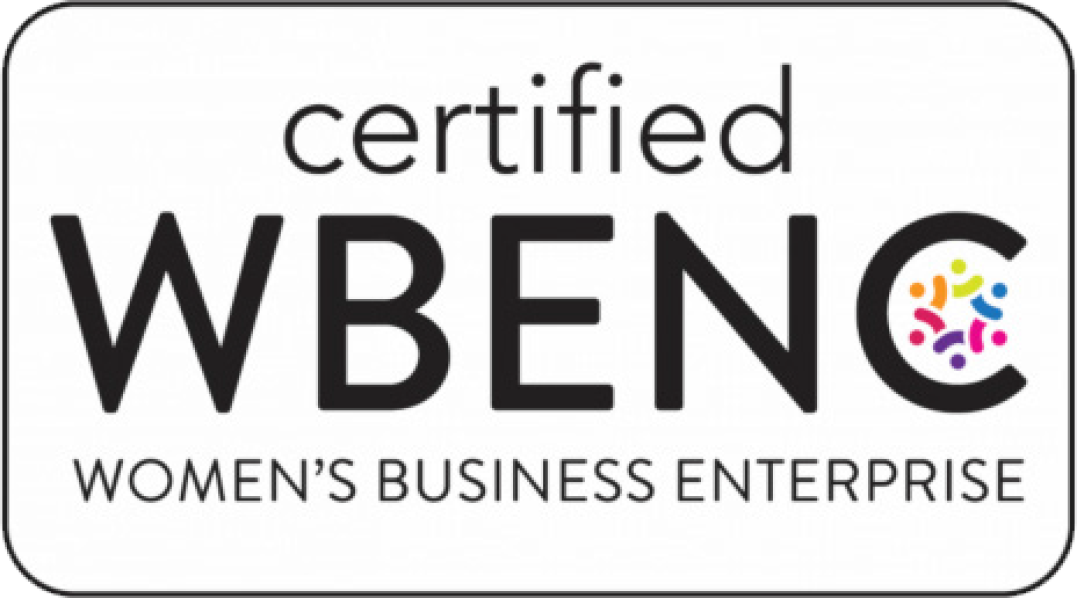Is your meeting at two-thirty in the afternoon, 2:30 p.m. or 2:30 PM? Are you writing an email or an e-mail? Do you use a serial comma, or not? How do you know what to capitalize? How do you number and identify the figures and tables in your report? Should you use a hyphen, an en dash or an em dash? Are these questions a bit overwhelming?
If so, there is a simple solution. Adopting an editorial style guide for your organization provides an all-in-one manual to the conventions of written communication. An editorial style guide ensures all your marketing and communications materials—from emails to client correspondence to your website to reports and everything in between—are presented in a consistent manner. This not only contributes to the clarity and effectiveness of your communications, it conveys an image of professionalism and quality.
It used to be that editorial style guides were mainly associated with publishing and academia. But these days, nearly every business is a content creator. Websites, social media, blogs, ads, reports and white papers all consist of written content. Using an editorial style guide for your business or brand is imperative to creating content worth reading, viewing, liking and sharing.
What is an editorial style guide?
An editorial style guide is a manual that maps out specific standards and conventions for writing and designing documents. Everyone within an organization (as well as freelance writers and other contractors) can use this guide to ensure consistent style, tone, usage, terminology and formatting across all communications. There are many established style guides used by specific industries or academic disciplines. (You may remember using one in school to cite sources in research papers.) An organization may adapt an established guide or create a house style manual to suit their own needs.
Some of the items typically addressed in a style guide include:
- Grammar and punctuation
- Capitalization
- Numbers and dates
- Abbreviations and acronyms
- Terminology and preferred wording
- Style and tone
- Formatting
- Images and tables
- Procedures for producing content
Frequently used style guides
Let’s flash back to your high school or college writing class. AP, APA, MLA, CMS, ACS, AMA… Do any of these acronyms sound familiar? Chances are you used one of these guides to format essays or research papers for school assignments. To refresh your memory, here’s an overview of some commonly used style guides and the industries and disciplines they’re used for.
- Associated Press Stylebook (AP): AP style provides guidelines for journalistic writing and is used by most newspapers, magazines and public relations offices (although some newspapers, such as the New York Times, have their own style guides that deviate from AP style). The guiding principles of AP style include consistency, clarity, accuracy and brevity, with an emphasis on avoiding offensive language and stereotypes.
- American Psychological Association (APA): This guide is primarily used in the social sciences. The APA states that its guidelines were developed “to assist reading comprehension in the social and behavioral sciences, for clarity of communication, and for word choice that reduces bias.”
- Modern Language Association Style Manual (MLA): This guide is used mainly in academics and for scholarly publications in the humanities.
- Chicago Manual of Style (CMS): Cherished by editors, CMS covers manuscript preparation, publication, grammar, usage, documentation and more. The guide and variations of it are widely used in publishing and across a variety of disciplines.
Some industry-specific guides include the AMA Manual of Style (for medicine and health fields), IEEE (for technical fields), ASCE (civil engineering), The Bluebook (legal) and ACS (American Chemical Society). If your business doesn’t have an industry-specific guide, or if you need a different manual to suit the needs of your marketing and communications materials, you can use AP, APA, MLA or CMS as a base to create your own guide.
How to adopt a style guide for your organization or brand
Because you want to produce more effective, better quality content and communications, I’m sure you’re wondering how to establish a style guide for your business. Here are the steps you can take.
- Who typically produces your content? Get together with them, along with any marketing personnel who work with or for your organization. Have a talk about issues that may exist in your current content and what might make it better. Discuss the tone you’d like your content to convey.
- Look over some already established, commonly used style guides. The four detailed above are great starting points, as well as any guide that may be widely used for your industry. You can take key guidelines from CMS, for example, and build your own guide around it, supplementing it with your own exceptions or additions.
- Using your discussion from Step 1 and an established guide as a base, draft an editorial style guide that covers basics such as grammar, punctuation, formatting, terminology, tone and procedures, along with anything else specific you need to address (branding colors, image preparation, design conventions, etc.). Keep your guide straightforward, well-organized and easy to understand—and make sure the guide itself adheres to conventions it is establishing.
- Share the draft with others in your organization for feedback.
- Create a final document. If your guide is long or includes a lot of information, consider creating a “cheat sheet” that summarizes main points for quick reference. Keep a pdf version of your guide in one place where everyone can easily access it, or distribute it to the employees and contractors who will use it.
- Update your guide periodically and redistribute.
Your current and potential clients are inundated with written content on a daily basis—make sure yours stands out. Using an editorial style guide across all marketing and communications will streamline your content creation and improve the overall image you convey.
Is your meeting at two-thirty in the afternoon, 2:30 p.m. or 2:30 PM? Are you writing an email or an e-mail? Do you use a serial comma, or not? How do you know what to capitalize? How do you number and identify the figures and tables in your report? Should you use a hyphen, an en dash or an em dash? Are these questions a bit overwhelming?
If so, there is a simple solution. Adopting an editorial style guide for your organization provides an all-in-one manual to the conventions of written communication. An editorial style guide ensures all your marketing and communications materials—from emails to client correspondence to your website to reports and everything in between—are presented in a consistent manner. This not only contributes to the clarity and effectiveness of your communications, it conveys an image of professionalism and quality.
It used to be that editorial style guides were mainly associated with publishing and academia. But these days, nearly every business is a content creator. Websites, social media, blogs, ads, reports and white papers all consist of written content. Using an editorial style guide for your business or brand is imperative to creating content worth reading, viewing, liking and sharing.
What is an editorial style guide?
An editorial style guide is a manual that maps out specific standards and conventions for writing and designing documents. Everyone within an organization (as well as freelance writers and other contractors) can use this guide to ensure consistent style, tone, usage, terminology and formatting across all communications. There are many established style guides used by specific industries or academic disciplines. (You may remember using one in school to cite sources in research papers.) An organization may adapt an established guide or create a house style manual to suit their own needs.
Some of the items typically addressed in a style guide include:
- Grammar and punctuation
- Capitalization
- Numbers and dates
- Abbreviations and acronyms
- Terminology and preferred wording
- Style and tone
- Formatting
- Images and tables
- Procedures for producing content
Frequently used style guides
Let’s flash back to your high school or college writing class. AP, APA, MLA, CMS, ACS, AMA… Do any of these acronyms sound familiar? Chances are you used one of these guides to format essays or research papers for school assignments. To refresh your memory, here’s an overview of some commonly used style guides and the industries and disciplines they’re used for.
- Associated Press Stylebook (AP): AP style provides guidelines for journalistic writing and is used by most newspapers, magazines and public relations offices (although some newspapers, such as the New York Times, have their own style guides that deviate from AP style). The guiding principles of AP style include consistency, clarity, accuracy and brevity, with an emphasis on avoiding offensive language and stereotypes.
- American Psychological Association (APA): This guide is primarily used in the social sciences. The APA states that its guidelines were developed “to assist reading comprehension in the social and behavioral sciences, for clarity of communication, and for word choice that reduces bias.”
- Modern Language Association Style Manual (MLA): This guide is used mainly in academics and for scholarly publications in the humanities.
- Chicago Manual of Style (CMS): Cherished by editors, CMS covers manuscript preparation, publication, grammar, usage, documentation and more. The guide and variations of it are widely used in publishing and across a variety of disciplines.
Some industry-specific guides include the AMA Manual of Style (for medicine and health fields), IEEE (for technical fields), ASCE (civil engineering), The Bluebook (legal) and ACS (American Chemical Society). If your business doesn’t have an industry-specific guide, or if you need a different manual to suit the needs of your marketing and communications materials, you can use AP, APA, MLA or CMS as a base to create your own guide.
How to adopt a style guide for your organization or brand
Because you want to produce more effective, better quality content and communications, I’m sure you’re wondering how to establish a style guide for your business. Here are the steps you can take.
- Who typically produces your content? Get together with them, along with any marketing personnel who work with or for your organization. Have a talk about issues that may exist in your current content and what might make it better. Discuss the tone you’d like your content to convey.
- Look over some already established, commonly used style guides. The four detailed above are great starting points, as well as any guide that may be widely used for your industry. You can take key guidelines from CMS, for example, and build your own guide around it, supplementing it with your own exceptions or additions.
- Using your discussion from Step 1 and an established guide as a base, draft an editorial style guide that covers basics such as grammar, punctuation, formatting, terminology, tone and procedures, along with anything else specific you need to address (branding colors, image preparation, design conventions, etc.). Keep your guide straightforward, well-organized and easy to understand—and make sure the guide itself adheres to conventions it is establishing.
- Share the draft with others in your organization for feedback.
- Create a final document. If your guide is long or includes a lot of information, consider creating a “cheat sheet” that summarizes main points for quick reference. Keep a pdf version of your guide in one place where everyone can easily access it, or distribute it to the employees and contractors who will use it.
- Update your guide periodically and redistribute.
Your current and potential clients are inundated with written content on a daily basis—make sure yours stands out. Using an editorial style guide across all marketing and communications will streamline your content creation and improve the overall image you convey.


